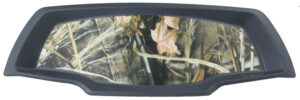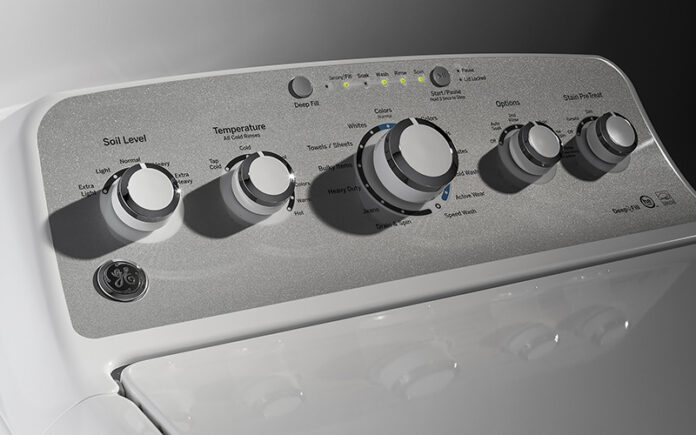Despite its slow growth in the US, in-mold decorating and labeling processes have proven themselves to be popular with plastics decorators and molders. Plastics Decorating recently sat down with Dave Schoofs, business and product development at Central Decal, to discuss the ways in which IMD/IML has made an impact, how molders can best make use of the technology, and how IMD will continue to be utilized in the future, especially when it comes to hot-button issues like sustainability.
In-mold decorating and labeling have been popular processes in Europe and other countries but have seen slower adoption in the States. Will IMD continue to grow in the US?
IMD has expanded the boundaries of design, functionality, performance and user interface and continues to expand globally for injection and blow molding. Fior Markets research recently projected growth of “$5.56 billion USD in 2018 to $8.78 billion USD by 2026, or 5.9% CAGR for the period 2019 to 2026.” Significant growth is within food and beverage packaging, which accounts for over 40% of all IMD applications.
Based on 2016 statistics, the European Union accounts for more than 60% of the total IMD market followed by 22% in North America and 11% in Asia. Even with the recent 3% to 5% annual growth for the past four years in Asia and North America, the EU dominates in the use of IMD.
Package sustainability of fast-moving consumer goods is responsible for the growth of IML in the EU, as compared to North America and Asia. For durable goods, reliability, design and integrated user interface drive growth of IMD in the EU, as compared to North America and Asia, where the manufacturing/distribution sales channel price pressures have been found to negatively impact and restrain the growth of IMD in certain markets; however, there are growth opportunities that value IMD.
In the near future, I anticipate we will experience greater growth of IMD in North America and Asia in response to sustainability regulations and evolving consumer demand for increased functionality, stylized designs and performance.
What is influencing the use of IMD on durable goods?
Design trends that incorporate full-color, multifunction touchscreens and capacitive switches are displacing traditional mechanical and resistive touch UI with IMD-FIM (film insert molding) on auto and appliance applications. The large displays typically require a protective plastic layer and a decorated 3D bezel that is a great fit for a formed IMD-FIM. There also is a greater demand for multiple graphic variations and leveraging tooling across multiple product lines. IMD-FIM is a perfect fit, with rapid changeover from one image to another. In-mold electronics (IME) appears also to be growing more rapidly in the EU than North America and Asia. As the IME technology matures, the use of this application will continue to grow.
Why is IML a popular choice when decorating plastic containers and other products?
Packaging is an ideal fit for IML and is growing in response to sustainability and the logistics/POS energy efficiency demands. Plastics simply do not biodegrade to any significant degree in landfills and account for nearly 20% of litter. Sustainability will drive greater use of IML in our throwaway society. The redesign of packaging to reduce cubic space of the package is a perfect opportunity to incorporate IML. Thin wall packaging using like-resin IMLs are easily repurposed. Shrink sleeves and PSA labels require special recycling processes. Depending on the type and specific density of label or shrink sleeve, the package may be lost in the recycling process and end up in a landfill.
What are some of the challenges of IMD/IML? What must an injection molder put in place before considering the addition of IMD?
There is a common misconception among molders that IMD is simply placing a graphic in the tool and shooting resin, and if it doesn’t work, the problem is the IMD insert. To be successful with IMD, the molder must be willing to make an investment in equipment, R&D and intellectual property (IP).
For example: an initial equipment investment for a robot in the $90K range. Next plan $20K+ for the end-of-arm tooling (EOAT) and nest specific to the shape of the insert and tool geometry. EOAT becomes more complex with multiple inserts and with multiple cavities. The speed and repeatability of the IMD placement is very critical, especially for high-speed molding of packaging.
As for IP, molders need to develop a good understanding of how tool/gate design and cycle are impacted by size, shape and location of the decoration, resin type, flow front, cycle temperatures, wall thickness, flow/fill, knit lines and surface finish. The molder also needs to determine how to hold the IMD in correct placement with static, vacuum or friction fit.
If planning to use IMD-F, the molder needs to work closely with the foil supplier to develop this capability. IMD-F requires custom tooling and a feed system for the continuous roll of foil. Robotics and EOAT may be required to handle the decorated plastic part after ejection.
What IMD/IML challenges exist for the end customer?

Molding and traditional decorating methods are well understood by the end customer. IMD typically improves durability and, depending on volume, can be a lower cost option; however, it may require additional engineering and tooling to implement vs. traditional decorating methods. Common challenges include:
- Don’t assume two similar IMD programs will perform the same. Subtle differences can present unique challenges.
- IML, IMD-F and IMD-FIM present unique capabilities and quality challenges.
- Engage the molder, robot, EOAT/nest and IMD supplier from concept through mass production. As an IMD supplier, it is not uncommon to encounter tool and EOAT designs at pilot runs that negatively impact the IMD and total yield.
- Test and validate assumptions early and then sample in the production work cell prior to production.
- The IMD changes during the molding process. Validate the performance of the IMD with Weatherometer (UVA or UVB), Xenon, humidity, abrasion, chemical, adhesion, temperature or environmental cycle testing.
- The printed ink and clears must withstand cracking, washout, discoloration and delamination during molding. Confirm that the IMD will not discolor, crack or oxidize in the final application.
- Is the IMD base material appropriate and processed correctly for the application? Materials such as spun woven materials are a natural sponge and have catastrophic failure if not processed properly.
- Validate the IMD for consistency and reliability to ensure low PPM.
What projects/applications make the most sense for in-mold decorating/labeling? How is IML impacted by changes in product design?
IMD, direct printing, pad printing, paint/laser etch and adhesive backed graphic each have unique capabilities and limitations. Product shape, volume, functionality, durability requirements, volume/price expectations, type of image (number of colors, use of metallics), textures/finishes and assembly take time to determine how to best decorate a product.
IML outperforms labels on applications where there is a regular exposure to liquids such as chemicals and detergents. Shampoo containers were one of the first packages using IML because of the type of image and environment. The decoration must flex with the container when squeezed. IML also is ideal for FDA-approved direct food contact including decorated plates and cups. These also can include specialty films, such as lenticular and metallized films.
What’s next for IMD?
I anticipate IMD will continue to grow. The growth of IMD over the past 30+ years is a direct result of creativity, the desire to incorporate a design, improve margins and product durability by challenging traditional decorating mindset. IMD is not limited by the end product. IMD applications that come to mind include golf clubs, auto interior/radio/PRNDL/speedo, washing machines, handheld electronics, glucose meters, bottles, lawn mowers, tools, backboards, cups and plates, dustpans, hydroplanes, recycling containers, yogurt cups, 3D brandmarks and many more.
The willingness to invest in the development of cost-effective solutions in response to sustainability requirements, the value of functionality/design and improved durability will drive the growth of IMD.
 Dave Schoofs has nearly 40 years of experience providing durable graphics to a wide variety of markets including automotive, appliance, lawn and garden, sporting goods and handheld electronics. His current responsibilities include supporting business and product development. For more information, contact [email protected] or visit www.centraldecal.com.
Dave Schoofs has nearly 40 years of experience providing durable graphics to a wide variety of markets including automotive, appliance, lawn and garden, sporting goods and handheld electronics. His current responsibilities include supporting business and product development. For more information, contact [email protected] or visit www.centraldecal.com.
Reprinted with permission from Plastics Decorating.





